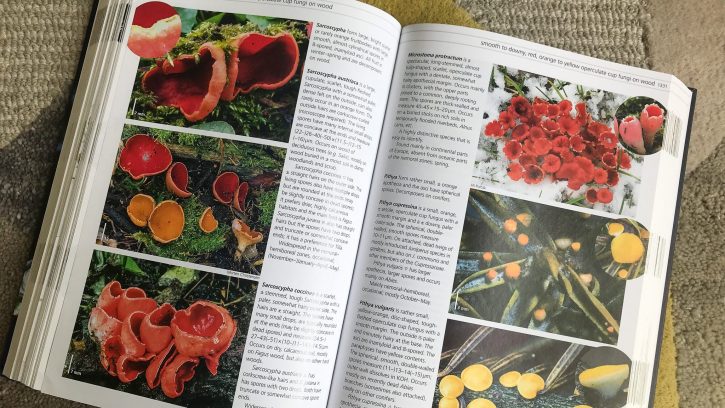The Hall of Einar Sunday Review #7
Hello and welcome to my Sunday Review. Every week I read great wildlife and nature books, see engrossing websites and hear wonderful new music – this is my chance to bring you all the best I’ve experienced – every Sunday.
Everything Is Connected
Jo Brown (Bernoid)
To be a professional artist you have to be good. Very good. You don’t just have to work hard, you also have to have a constant source of inspiration. Jo Brown is an artist from South Devon I really admire. Her work is rooted in the natural world and many of her themes include fungi, insects and birds. That’s just my kind of constant inspiration.
Every October artists all over the world take part in the Inktober drawing challenge by doing one ink drawing a day for the month. It’s been happening since 2009 and now thousands of artists take part doing 31 drawings in 31 days. Many follow ‘prompts’ of what to draw on each day. I liked Jo Brown’s approach in 2019 not to follow the prompts and simply produce one massive image over the month. Joining in, yet doing it on your own terms, is a proper punk thing to do.
The work she created is called ‘Everything is Connected’. Here it is:
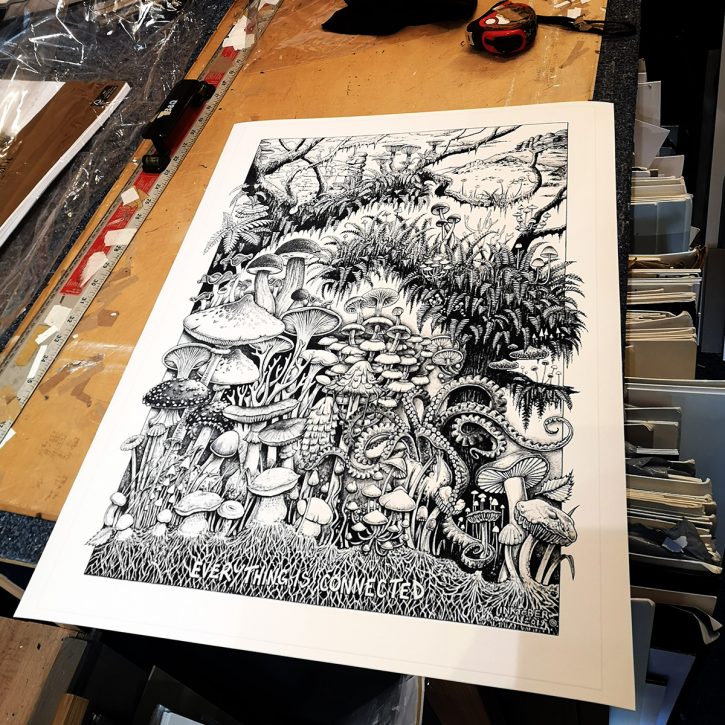
Fabulous, isn’t it? Jo has a massive A2 reproduction of it available to buy. Just imagine how magnificent it would be on your wall.
You can follow Jo Brown creating ‘Everything is Connected’ from day one. with Field Blewits and Conical Brittlestem, to day thirty, and Beefsteak Fungus and Mycena species, on Instagram at @taojb. It’s worth it to see it growing, organically, as if everything is connected.
It’s also good to support artists directly because a huge amount of our joy depends upon them. If you search you can find many of Jo’s designs stolen and used to decorate everything from umbrellas to water bottles. It’s amazing that infringing copyright isn’t seen as stealing by many people. The originators of curiosity and beauty should always be the ones to be rewarded by any fair society.
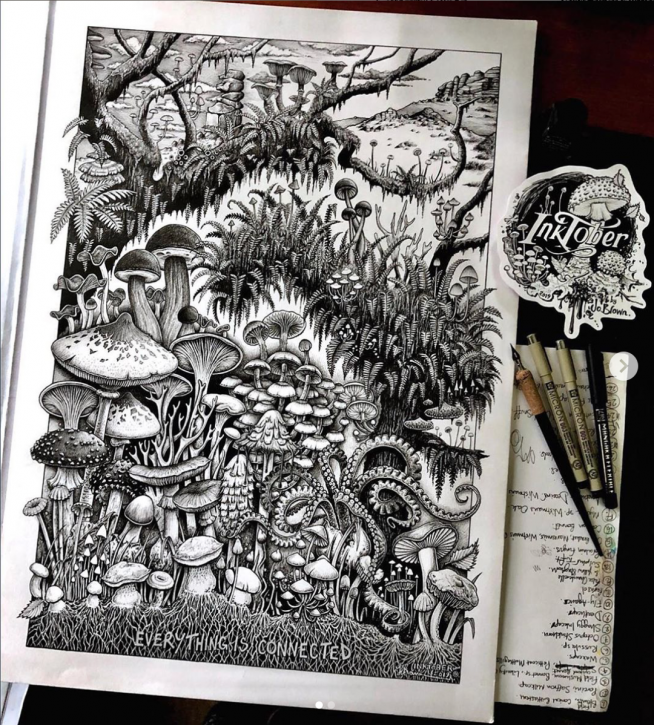
“My inspiration for this piece – Mushrooms & Dartmoor. Everything I’ve drawn for this I found on Dartmoor – The twisted trees are Wistman’s Wood Oaks with Sharp Tor, Pil Tor & Bowerman’s Nose in the background.”
Jo Brown also did the illustrations in Bird Therapy by Jo Harkness which I reviewed in the Sunday Review 5. They’re not just artistically fine but manage to capture the ‘jizz’; the general impression, size and shape, which is so crucial to identification.

They are elegant, painstakingly researched and accurately represented. And if that isn’t enough, just look at this illustration of a Long-Tailed Bushtit which took between six and seven hours to complete:

Jo Brown has a nature journal filled with intense, exquisite drawings of nature she has photographed. It’s a delight to see each page. I’m very pleased that a publisher, Short Books, has seen sense to sign her up and I look forward to buying a copy when it’s published.

It’s beautifully handled. I look forward to reviewing it for you. And someone who notes the coordinates of every sighting? Lovely. Do visit bernoid.com to see what Jo is up to. I will be. See you there.
Talking of inspiration, here’s mine:

Fungi of Temperate Europe – Volumes 1 & 2
If you’ve ever shown a passing interest in fungi you may have considered buying a book on them. I have plenty. In fact, an entire library of them. There are field guides with illustrations, specialist books with photographs of a small group, even a Mushroom cookbook (and yes, I’ll be reviewing that soon, because it’s marvellous and formed a huge part of my personality). I wish I had the opportunity to buy Fungi of Temperate Europe years ago. It’s breathtaking.
Here’s the layout; a rosette of identification followed by pages of detailed photographs and identification notes:
Here’s one of my favourite pages of the 1,700:

I love Waxcap fungi, as you can probably tell from all my posts on them:
Waxcaps
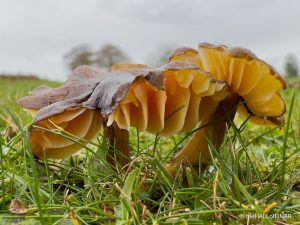 A date with Waxcaps A trip to Somerset to see my friend Martin had the unintended bonus of a walk and a crop of… read more
A date with Waxcaps A trip to Somerset to see my friend Martin had the unintended bonus of a walk and a crop of… read more Cycling past Waxcaps I'm cycling on Dartmoor when I see a Blackening Waxcap, Hygrocybe conica. It's always a thrill so spot one, so… read more
Cycling past Waxcaps I'm cycling on Dartmoor when I see a Blackening Waxcap, Hygrocybe conica. It's always a thrill so spot one, so… read more One of Britain’s rarest fungi So you think it doesn't look like much? I think it looks fabulous. It's growing in the short grass around… read more
One of Britain’s rarest fungi So you think it doesn't look like much? I think it looks fabulous. It's growing in the short grass around… read more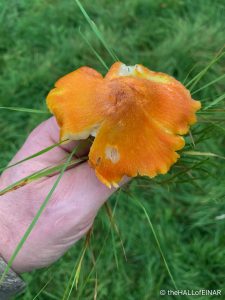 The most beautiful bouquet of Killerton Waxcaps Killerton is one of my favourite National Trust places in Devon. It's one of the ones which was sold to… read more
The most beautiful bouquet of Killerton Waxcaps Killerton is one of my favourite National Trust places in Devon. It's one of the ones which was sold to… read more Blackening Waxcaps There's a Blackening Waxcap, Hygrocybe conica, on the moist, shady roadside verges of the industrial estate. It's a beautiful colour.… read more
Blackening Waxcaps There's a Blackening Waxcap, Hygrocybe conica, on the moist, shady roadside verges of the industrial estate. It's a beautiful colour.… read more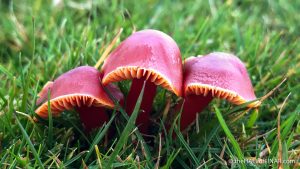 Waxcaps on the wane We're on a trip to north Devon, near Lynmouth, on an organised fungus foray. I'm particularly excited about the grassland… read more
Waxcaps on the wane We're on a trip to north Devon, near Lynmouth, on an organised fungus foray. I'm particularly excited about the grassland… read moreThese rosettes are a vital and fresh component of the book. They give all the key distinguishing features of the group and then point you in the right direction to their details. It makes everything as simple as it can be when it’s potentially so complex to start with.
And when you get to the individual species, the photographs are a delight. Well lit, beautiful, and with close-ups of distinguishing features.
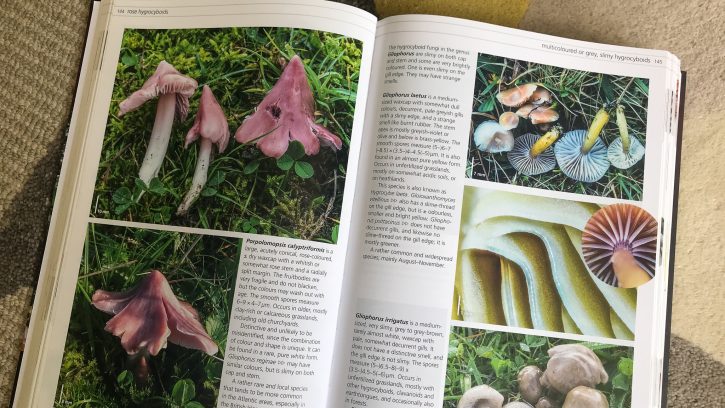
It’s a book that will be essential in the autumn. Or, should I say, books. It’s two epic volumes.

I’m so thrilled I live in a world which has people and a system which can support production of a book like this.
“Fungi of Temperate Europe is one of the most comprehensive mycological guides ever published. Featuring more than 7,000 photographs, this lavish two-volume set treats more than 2,800 species of fungi across the region.”
They aren’t kidding:
“Thomas Laessoe is a mycologist and senior researcher at the Natural History Museum of Denmark. He has previously been a senior scientific officer at the Royal Botanic Gardens, Kew and associate professor at the University of Copenhagen. He is the author of several guide books. Jens H. Petersen is a mycologist, graphic designer and photographer. He taught mycology at Aarhus University for more than 20 years and is the author of The Kingdom of Fungi (Princeton). Petersen and Laessoe created the online identification tool MycoKey (www.mycokey.com)”
Thank you Thomas and Jens. You’re both stars.
That’s it for this week.
I’ll be back with more reviews of things you might adore next Sunday.
In the meantime, I wish you a great week. Keep safe, everyone.
More Sunday Reviews
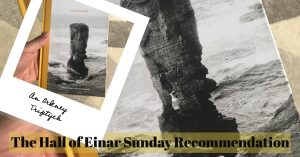 The Hall of Einar Sunday Recommendation #23 An Orkney Triptych - Book One by Erland Cooper and Alex Kozobolis read more
The Hall of Einar Sunday Recommendation #23 An Orkney Triptych - Book One by Erland Cooper and Alex Kozobolis read more The Hall of Einar Sunday Review #20 Hether Blether by Erland Cooper and Naturally Orkney Vol.2 - Raymond Besant read more
The Hall of Einar Sunday Review #20 Hether Blether by Erland Cooper and Naturally Orkney Vol.2 - Raymond Besant read more The Hall of Einar Sunday Review #19 Feather by Edgelarks and Pony Congo by Vicente Paredes. read more
The Hall of Einar Sunday Review #19 Feather by Edgelarks and Pony Congo by Vicente Paredes. read more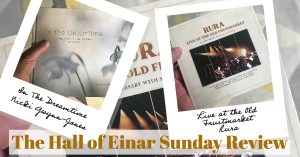 The Hall of Einar Sunday Review #17 In The Dreamtime by Nicki Gwynn-Jones and Live at the Old Fruitmarket by Rura read more
The Hall of Einar Sunday Review #17 In The Dreamtime by Nicki Gwynn-Jones and Live at the Old Fruitmarket by Rura read more The Hall of Einar Sunday Review #16 Fungi – card game by Brent Povis and Collins British Mushrooms & Toadstools photographic guide read more
The Hall of Einar Sunday Review #16 Fungi – card game by Brent Povis and Collins British Mushrooms & Toadstools photographic guide read more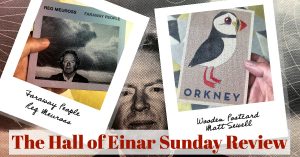 The Hall of Einar Sunday Review #15 Faraway People by Reg Meuross and The Wooden Postcard Company's Matt Sewell’s birds read more
The Hall of Einar Sunday Review #15 Faraway People by Reg Meuross and The Wooden Postcard Company's Matt Sewell’s birds read more
